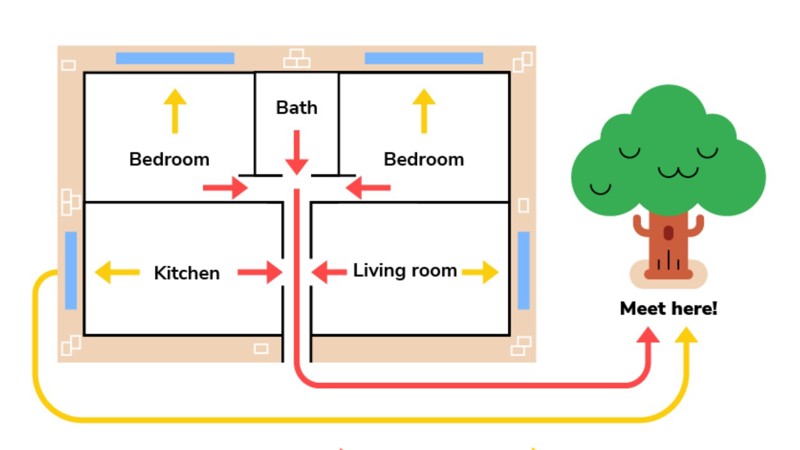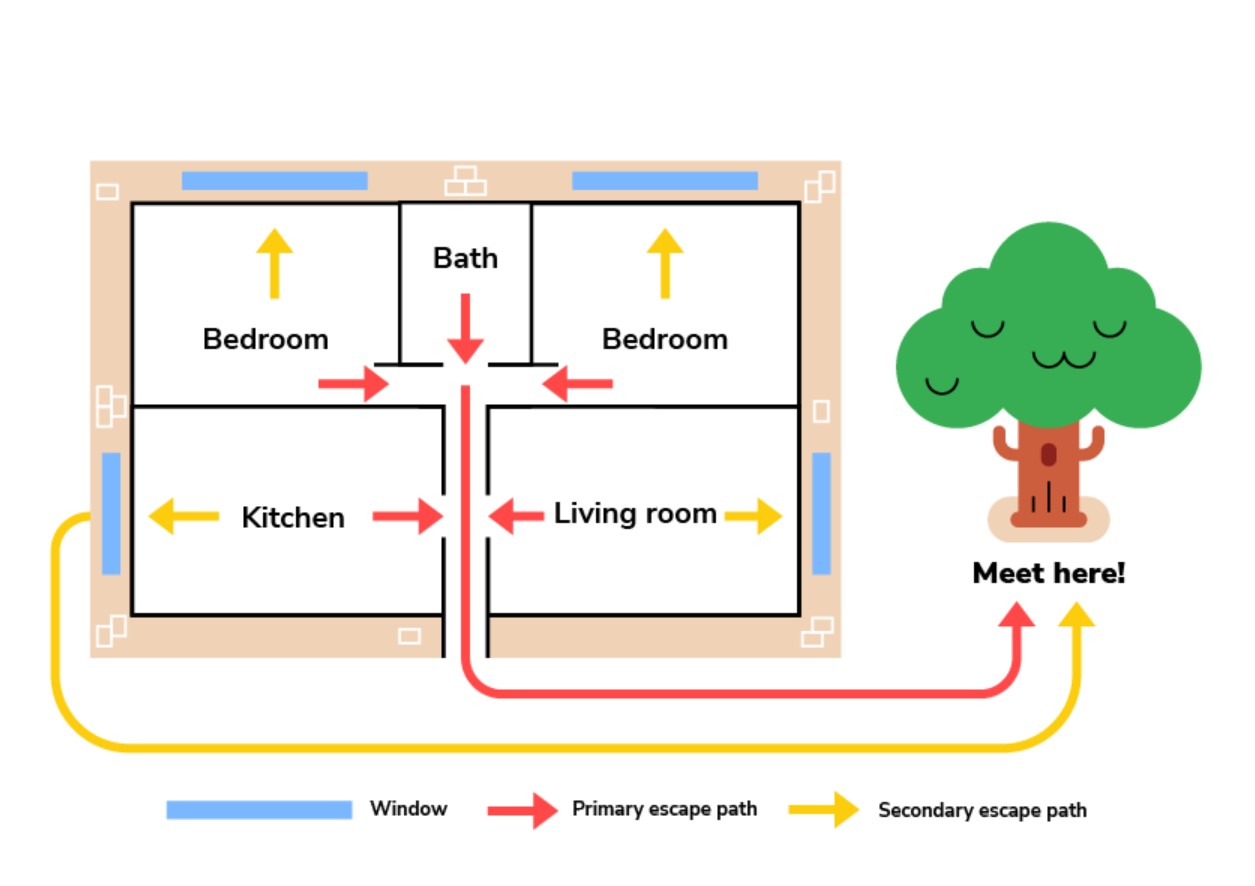
Escape route planning
You’ll need
- A4 paper
- Coloured pens or pencils

Plan your route
- Give everyone a sheet of blank paper.
- Ask them to think how their houses are laid out. Make sure to include all the rooms/floors.
- Explain that an escape route is the quickest and safest route out of a building.
- Once they’ve had some time to think, ask them to draw two different escape routes: one from their bedroom to the front door, and another from their bedroom to somewhere else in their home where everyone can gather and stay safe in case the fire blocks the front door.
- Assign half of the group the role of firefighter and half the group the role of stranded person.
- Ask the firefighters to pair up with a stranded person (they could shout for help) and ask the stranded person to share their escape route with the firefighter.
- The firefighter can then comment on what they like about the escape route.
Reflection
This activity got you thinking about a difficult topic. No-one likes to think about the chances of a fire, but preparing a route out and thinking critically can help you to act in a calm and measured way if the real thing ever occurs.
Safety
All activities must be safely managed. You must complete a thorough risk assessment and take appropriate steps to reduce risk. Use the safety checklist to help you plan and risk assess your activity. Always get approval for the activity, and have suitable supervision and an InTouch process.
Some young people might not be confident in drawing a plan of their home, so give them some help to lay it out or give a ready-made example.
All Scout activities should be inclusive and accessible.
